
The kiteboarders of Hong Kong - where they get airborne and the instructors who give them a push
In the latest instalment of our extreme sports series we head to Shui Hau beach on Lantau to talk to Hong Kong’s high-flying kiteboarding community
It’s a hot Sunday afternoon on Shui Hau beach on the south coast of Lantau Island. It’s one of Hong Kong’s longest beaches and among the best for kiteboarding. It’s also the location of Kiteboarding Hong Kong, a 150-member club established in 2006 (the association also hosts training sessions on Lung Kwu Tan, the closest beach to Tuen Mun).
It’s a colourful spectacle as eight kiteboarders zip along the water.
They are sharing the beach with 100 or so children and adults who are closer to shore, some sitting on colourful plastic stools, and engaging in a very different activity. They are digging for clams and other shellfish in the shallow mudflats exposed at low tide.
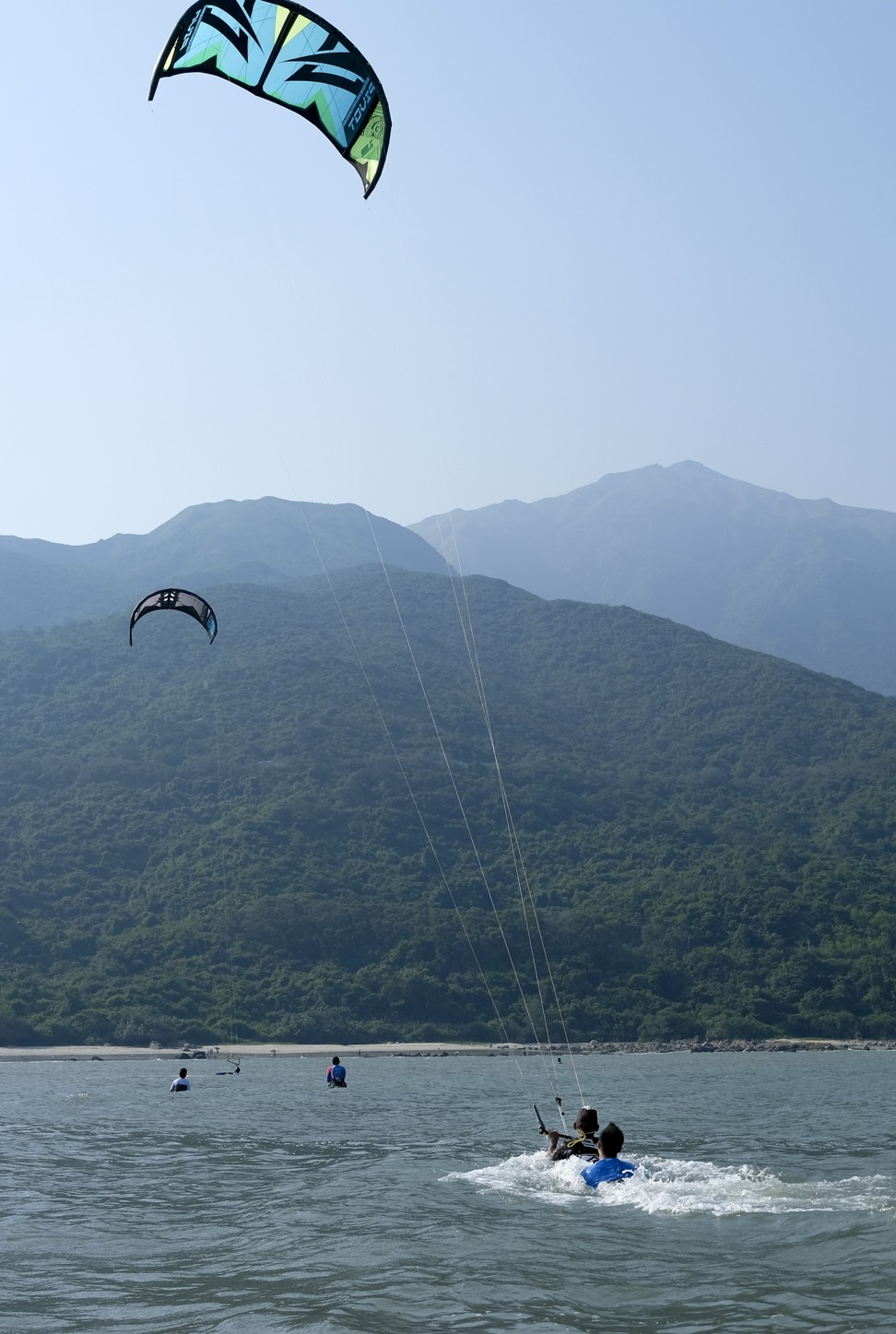

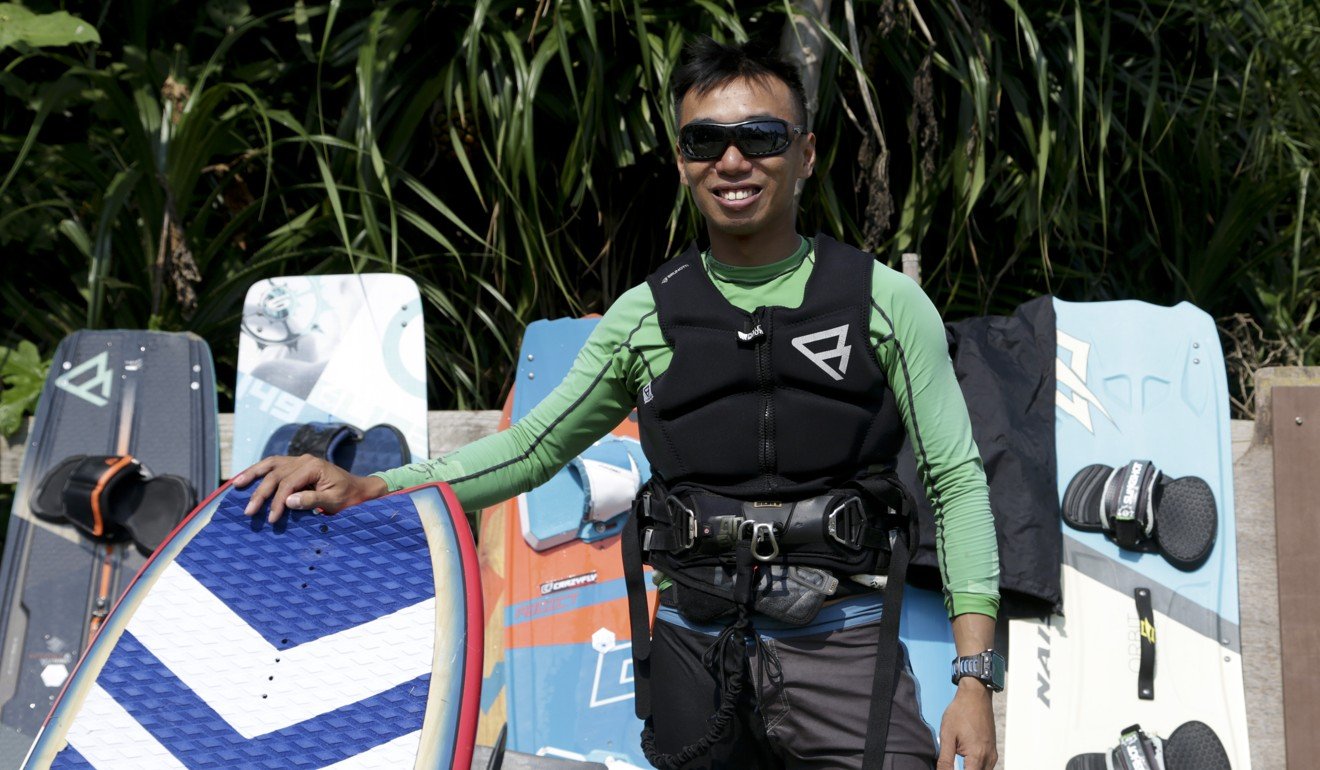
“We need more women involved in the sport,” he says as he unstraps his padded impact vest after an afternoon of kiteboarding. “But most girls in Hong Kong prefer shopping in malls and wouldn't think of taking it up because they’re worried about the sun or getting injured. I hope that changes,” Ng adds.
“We go away from the shore to avoid the people,” says Ng, referring to the clam diggers scattered along the 1km-long beach. “For us the biggest problem is scuba divers, but we know this beach well and are aware of where they might be.
“Touch wood, I’ve never had an injury. Most injuries here are caused by people cutting their feet on shells.”
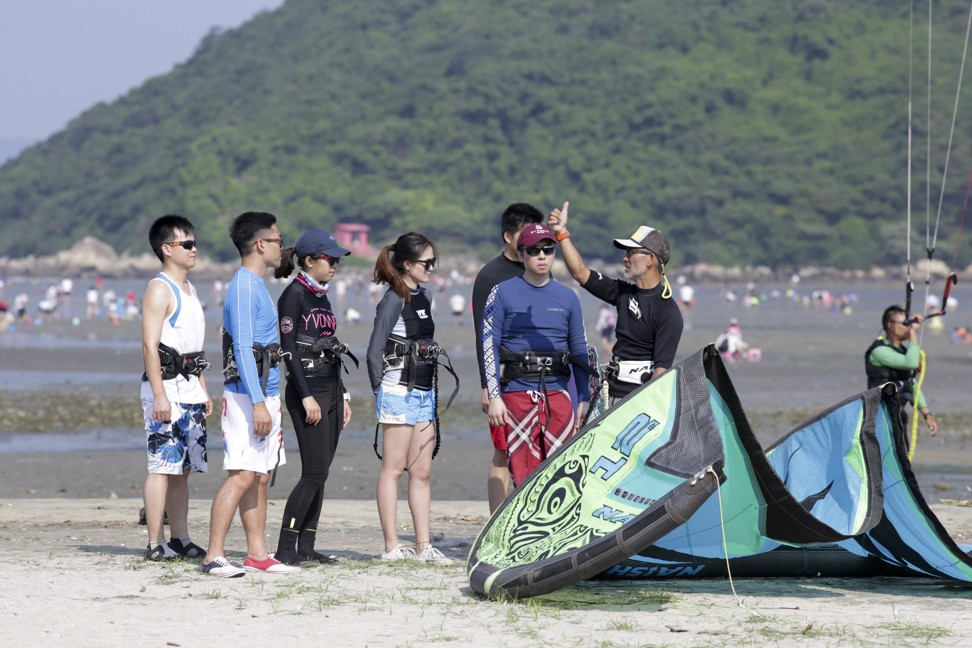
This February in Cape Town, South Africa, Dane Nick Jacobsen set the world record for the highest kite jump at 28.6 metres, with an airtime of 8.5 seconds. French kiteboarder Alex Caizergues holds the speed record at 50.57 knots (93.65km/h).
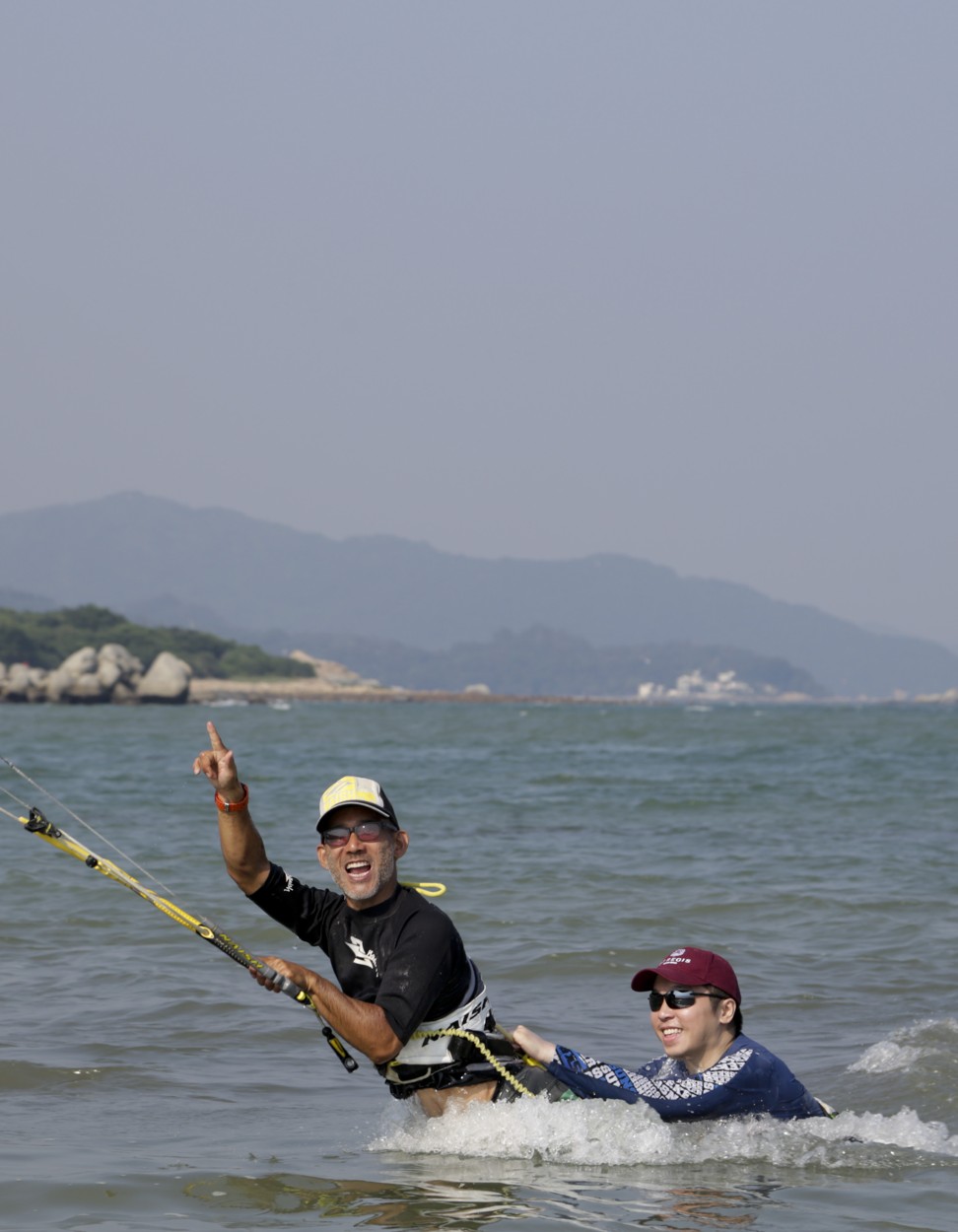

It was announced in 2012 that kitesurfing was to be included as a sport in the 2016 Rio Olympics, replacing windsurfing. However, in a shock move the decision was overturned. It’s now a non-Olympic sport until 2020 at the earliest.
The tourism industry has also caught the wave, with travel companies offering packages to kiteboarding-friendly destinations from Ireland to Egypt and Fiji. Asia also has its fair share of popular hot spots.
“I plan vacations around kitesurfing and Hong Kong is a great launch pad to visit Asian destinations such as Vietnam, Sri Lanka, Taiwan, and Okinawa in Japan. Thailand and the Philippines are also good,” says Ng. “If you have great wind and waves and a long stretch of water with white sand – well that’s pretty perfect.
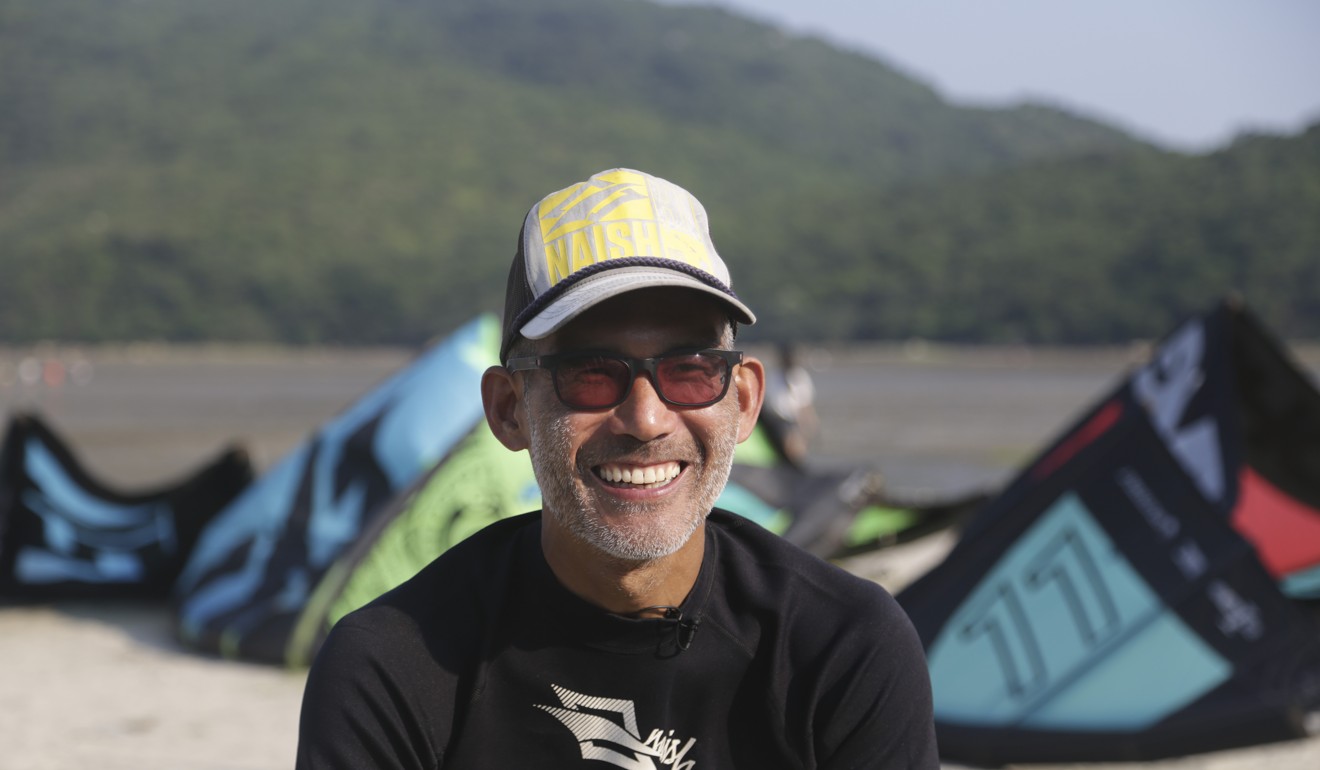
“I was hooked straight away – no more windsurfing,” he says, adding that kiteboarding allows him to attempt a wider range of tricks than windsurfing.
“We started with just a few people who had learned the sport while visiting other countries. We practised in Lung Kwu Tan in Tuen Mun and Sai Kung, places where we had all windsurfed. In 2008 we started kiteboarding here in Shui Hau, where it’s windy, steady and a safe beach.
“Even some students from Macau and mainland China join us here.”
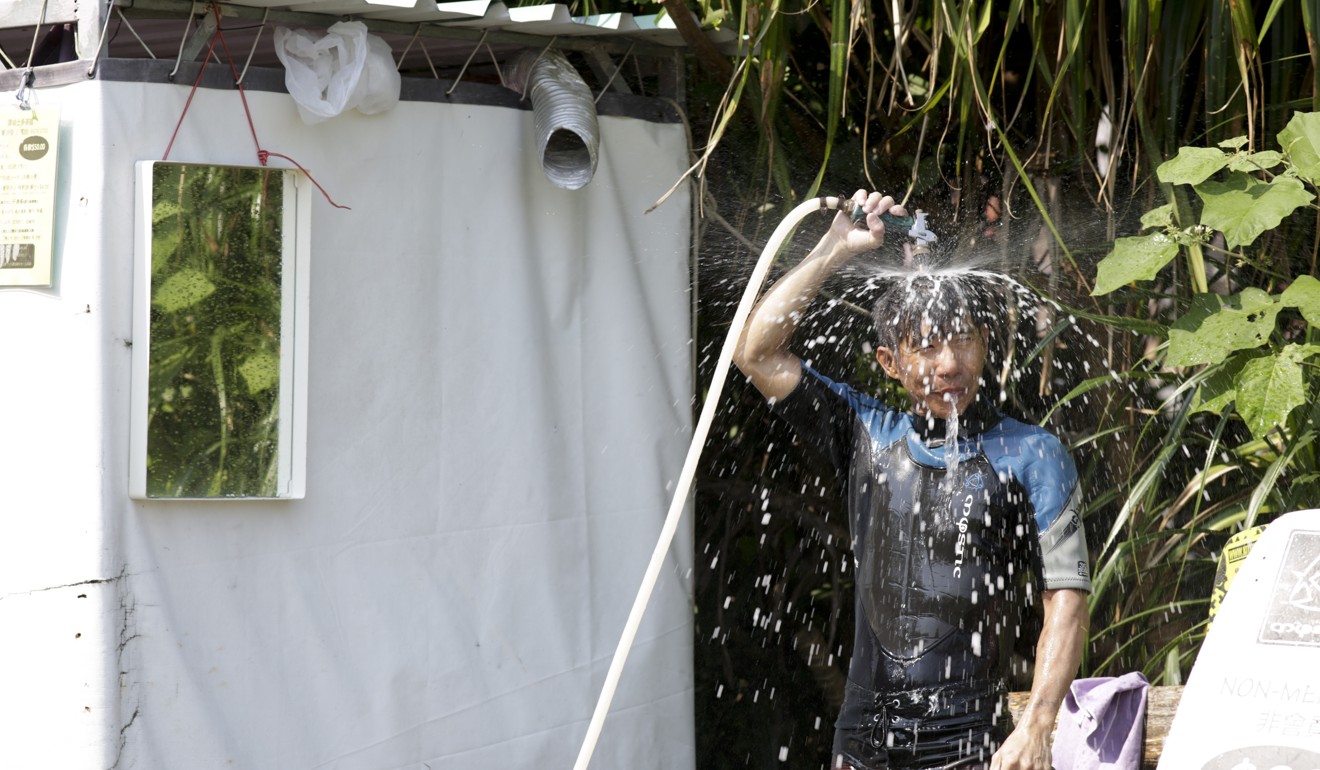
Tang says kiteboarding provides a full-body workout. “It’s good for everyone, whether you’re seven or 70.”
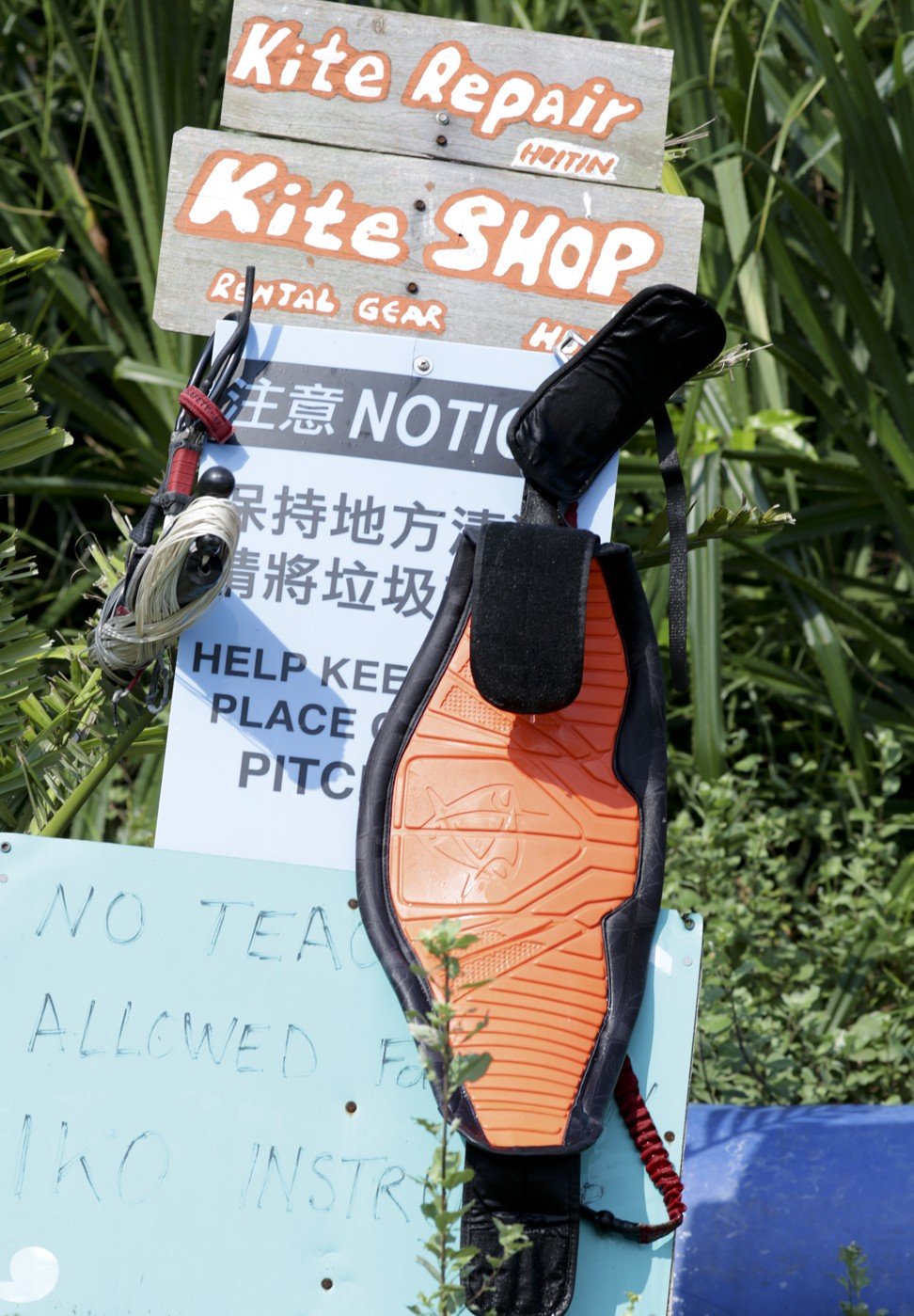
“Hong Kong is a good place for the sport but not great like some places, but at least we can do what we love.”
For Ng, kiteboarding is not just a sport but a lifestyle: “I like the beach, I like water sports and I like speed – so kiteboarding is the perfect package.”
For details on kiteboarding lessons and directions to kiteboarding beaches and other information visit
https://www.facebook.com/HongkongKiteboardingSchool/

